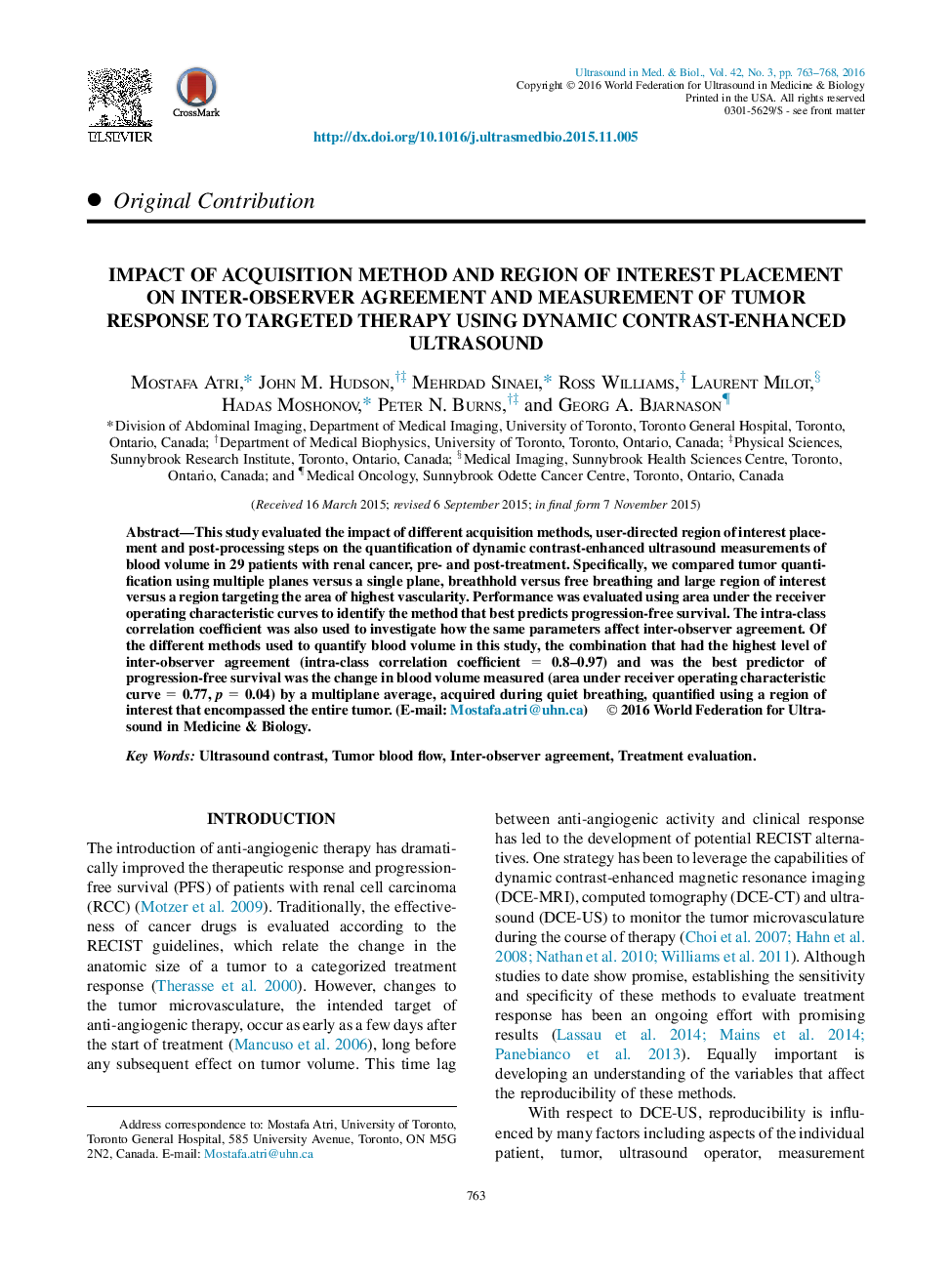| Article ID | Journal | Published Year | Pages | File Type |
|---|---|---|---|---|
| 10691190 | Ultrasound in Medicine & Biology | 2016 | 6 Pages |
Abstract
This study evaluated the impact of different acquisition methods, user-directed region of interest placement and post-processing steps on the quantification of dynamic contrast-enhanced ultrasound measurements of blood volume in 29 patients with renal cancer, pre- and post-treatment. Specifically, we compared tumor quantification using multiple planes versus a single plane, breathhold versus free breathing and large region of interest versus a region targeting the area of highest vascularity. Performance was evaluated using area under the receiver operating characteristic curves to identify the method that best predicts progression-free survival. The intra-class correlation coefficient was also used to investigate how the same parameters affect inter-observer agreement. Of the different methods used to quantify blood volume in this study, the combination that had the highest level of inter-observer agreement (intra-class correlation coefficient = 0.8-0.97) and was the best predictor of progression-free survival was the change in blood volume measured (area under receiver operating characteristic curve = 0.77, p = 0.04) by a multiplane average, acquired during quiet breathing, quantified using a region of interest that encompassed the entire tumor.
Related Topics
Physical Sciences and Engineering
Physics and Astronomy
Acoustics and Ultrasonics
Authors
Mostafa Atri, John M. Hudson, Mehrdad Sinaei, Ross Williams, Laurent Milot, Hadas Moshonov, Peter N. Burns, Georg A. Bjarnason,
